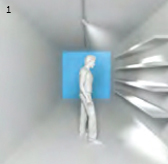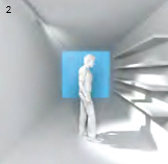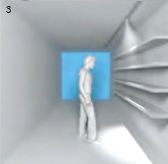
Emotion is the most important aspect of our relationship with retail. The decision to buy is 80% emotional and 20% of objective, therefore, it is of vital importance to fully understand and exploit the ability to influence, inspire and guide customers by stimulating sensory reactions, appealing to instincts and entertaining.
We are more or less sensitive to light depending on the angle at which it enters the eye. This fact defines our understanding of how vertical illumination relates to horizontal illumination, and informs the way in which we can use luminaires to create optimal optical conditions, including the vital visual component of contrast. Our sensitivity to light depends on the angle at which it enters the eye, knowledge that guides and defines many aspects of lighting design. Our visual field extends upwards and downwards a 45º from our line of sight and 65º to each side. However, some parts of that visual field are more sensitive than others.
There is one simple equation to remember, which acts as the base for all vertical illumination design. The vertically illuminating lighting fixture, most commonly a spotlight or asymmetric linear fixture, should be positioned one third of the room height (H) from the surface to be illuminated, or simply put H/3, and rotated 30º towards the object. What this means in practice is that the lighting fixture is ideally positioned to illuminate all vertical surfaces, of a shelving display for example, without being blocked by the browsing customer or causing too many shadows.
(1). If lighting fixtures are too far from the shelf display the illumination will be partially blocked by the browsing customer causing shadows (2). On the other hand, if the fixtures are located too close to the shelf display the top shelf will be illuminated and all shelves below in shadow.


